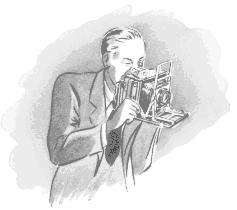clnfrd
Joined: 26 Mar 2002
Posts: 616
Location: Western Kentucky Lakes Area
|
 Posted: Sat Dec 20, 2003 12:07 am Post subject: Posted: Sat Dec 20, 2003 12:07 am Post subject: |
 |
|
| I must back-pedal on some advice I've offered in the past. I have a Flash Supermatic Shutter with a 10K resistor connected from one post to the shutter case internally. I have, in the past, advised against by-passing this resistor due to an observed 10K to ground short during the cocking of the shutter. I had dis-assembled my shutter about 75% looking for the X contacts which were missing. I decided to totally dis-assemble and re-assemble the shutter. In so doing, I found the end of a spring in the wrong place, causing that shorting problem. I also found the X contact was broken off or removed. I re-fabricated it from some copper stock. After re-assembling the shutter, the short is gone. However, the 10k resistor prevents X flash from working. Bottom line is this: it's OK to by-pass the resistor to get X synch to work. You can do this simply by using an ohm-meter to determine the connector on the bi-post that has 10K resistance to the shutter frame, then attaching a small wire or strap from that post to the screw that holds the bakelite bi-post connector to the shutter. It's okay to slightly loosen the bi-post and screw to do this. Or, you can go inside and replace the resistor with a straight wire. I can only assume the 10K resistor is there for a reason. Since you are switching the trigger voltage of the electronic flash with the shutter contact, usually 2 or 3 hundred volts, it may be a limiting resistor. Since the bi-post connector is not polarized, it's a good idea to determine which connector of the bi-post is at ground (shutter frame) potential and connect your synch cord so the shutter frame is common to the case of the flash unit. Otherwise, you could feel quite a little tingle if you have one hand on the flash case and the other on the shutter when you ignite the flash. That is, if your flash handle, or battery case, is metal, such as with a Strobonar 64B. Fred. |
|


